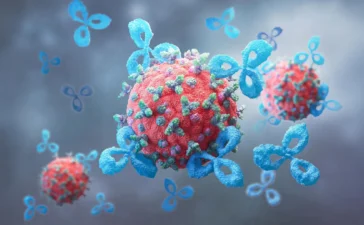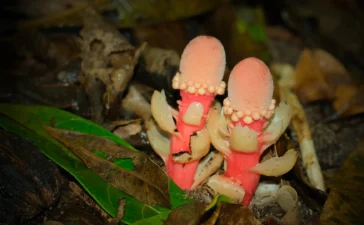Teams of mountaineering mice are helping advance understanding into how evolutionary adaptation to localized conditions can enable a single species to thrive across diverse environments.
In a study led by Naim Bautista, a postdoctoral researcher in Jay Storz’s lab at the University of Nebraska-Lincoln, the team took highland deer mice and their lowland cousins on a simulated ascent to 6,000 meters. The “climb” ventured from sea level and the mice reached the simulated summit seven weeks later. Along the way, Bautista tracked how the mice responded to cold stress at progressively lower oxygen levels.
“Deer mice have the broadest environmental range of any North American mammal, as they are distributed from the plains of Nebraska to the summits of the highest peaks in the Rocky Mountains and Sierra Nevada,” said Storz, Willa Cather Professor of biological sciences. “This study tested whether they are able to thrive across such a broad range of elevations by evolving adaptations to local conditions or by possessing a generalized ability to acclimatize.”
Conducted in a specialized lab at Canada’s McMaster University, the study divided each team of highland and lowland mice into two distinct groups — a control that remained at sea level throughout the study, and an acclimation group that embarked on the seven-week ascent.
After seven days at sea-level, conditions for the acclimated group advanced by 1,000 meters in elevation weekly, with oxygen levels reduced to reflect what climbers would experience. The research team monitored the ability of each mouse to cope with cold exposure by means of metabolic heat production.
Data showed that the highland and lowland deer mouse cousins do not share a general ability to acclimate to hypoxia (low oxygen conditions). As the simulated elevations rose above 4,000 meters, the homefield advantage of the highland mice quickly became apparent. As oxygen levels dropped, the highland mice were better able to regulate body temperature than their lowland counterparts owing to more efficient breathing and circulatory oxygen-transport.
“The results show us that the highlanders and lowlanders do not share a generalized ability to acclimatize to changing environmental conditions,” Bautista said. “Rather, the mice living at higher elevations share evolved ways to acclimatize to low oxygen conditions that are distinct from those of the lowland prairie mice.”
The study also showed that the highland mice have a genetic advantage that helps suppress thickening of the right ventricle of the heart, a symptom of pulmonary hypertension, which is a common malady among lowland mammals that are forced to acclimatize to low oxygen conditions.
Bautista said the findings show how adaptation to local conditions can allow a widely distributed species like the deer mouse to thrive in diverse environments.
“It highlights how evolved changes specific to populations help shape their flexibility,” Bautista said. “Ultimately, it is these changes that influence their ability to survive within different habitats.”
Bautista is finalizing plans to repeat the study, taking it to new heights by measuring the responses of the yellow-rumped leaf-eared mouse, the world’s highest-dwelling mammal. The species hails from the Andes mountains, living at elevations up to 22,110 feet, and was discovered by Storz.
The deer mice study was recently published in PNAS. Other members of the research team include Storz; Ellen Shadowitz and Graham Scott of McMaster University; Nathanael Herrera and Zachary Cheviron of the University of Montana; and Oliver Wearing of the University of British Columbia.
You Might Also Like
Eating more vitamin C can physically change your skin
Scientists at the University of Otago, Faculty of Medicine -- Christchurch Ōtautahi, have identified a direct connection between how much...
MIT scientists strip cancer of its sugar shield
A research team from MIT and Stanford University has developed a new technique designed to push the immune system to...
This “mushroom” is not a fungus, it’s a bizarre plant that breaks all the rules
In the damp shade beneath moss-covered trees, high in the mountains of Taiwan and mainland Japan or deep within the...
A quantum mystery that stumped scientists for decades is solved
A global research team led by Rice University physicist Pengcheng Dai has verified the presence of emergent photons and fractionalized...









